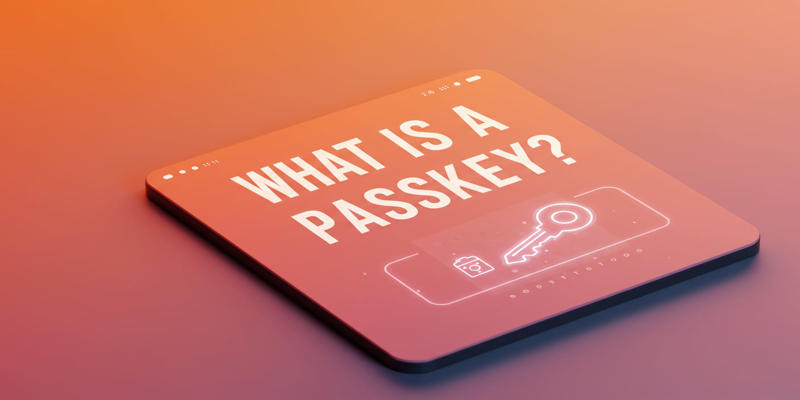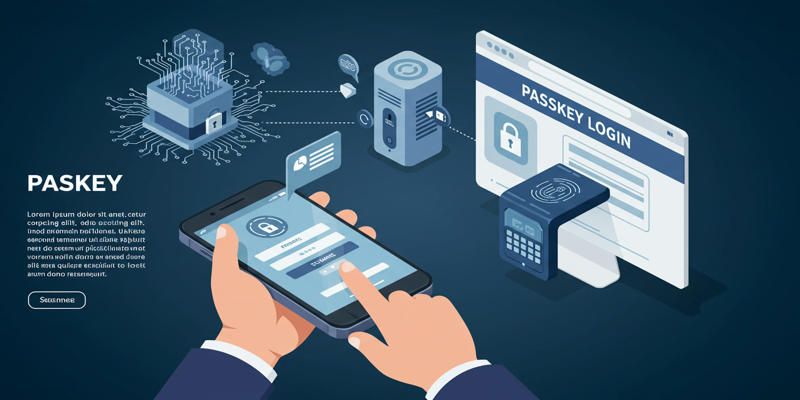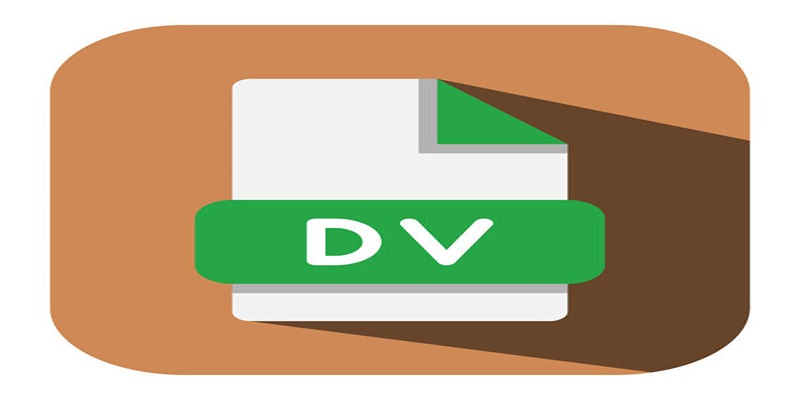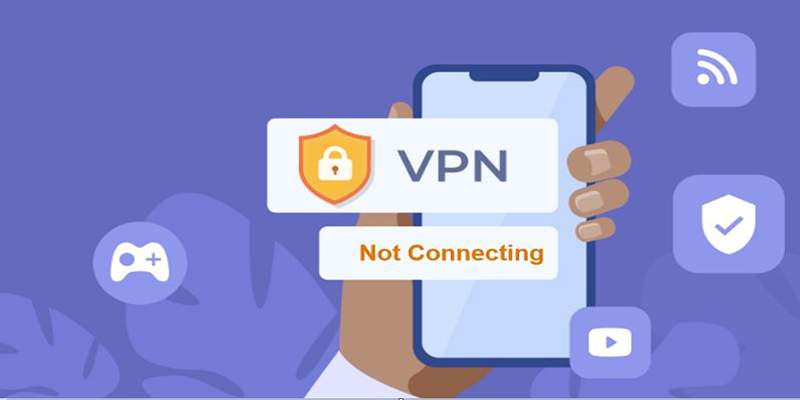Exploring Passkeys: How They Work and Their Advantages
Digital authentication has significantly evolved with the introduction of passkeys as an unvaulted passwordless system which replaces traditional authentication protocols. Due to cryptographic technology passkeys provide secure access to online accounts that operate without requiring password memorization while staying immune to phishing and hacking and data breach attacks. This paper explains the technology behind passkeys and their effects on digital security protocols.
What is a Passkey?

The cryptographic credential known as a passkey functions as an authentication tool that makes usernames and passwords obsolete during the authentication process. A user’s Passkey includes two correlated components with one part stored by the service and another stored privately on their device. The method protects login information from being obtained by malicious actors because it cannot be intercepted.
Support for Passkeys comes from the FIDO (Fast Identity Online) Alliance through membership of top technology corporations including Google, Apple and Microsoft. The authentication process becomes simpler yet more secure because passkeys create a system that stands against all phishing attacks.
How Passkeys Work
Public-key cryptography enables Passkeys to deliver secure user authentication through their operations.
Here’s how the process works:
Key Generation:
A device creates two cryptographic keys during account registration on sites which utilize passkey capabilities.
A Private Key stays hidden within your device storage system or encrypted cloud systems.
The Public Key travels to the website or application for connection to your account.
Authentication:
The authentication service will transmit a randomly produced verification task to your chosen device.
The device employs the private key for signing the challenge after you authorize using fingerprint or face matching or by entering your PIN.
The system uses the signed challenge to verify this information against the public key maintained by the service.
Verification:
The system allows access to users whose signature matches the current public key database maintained by the service. If not, authentication fails.
The security protocol protects your account since hackers would need both the public key and your private key to gain access.
Benefits of Passkeys
- Passkeys provide better functionality than conventional passwords because they possess several key benefits.
- Phishing risks vanish because users cannot get exposed through accidentally sharing passkeys or handing them over to phishers.
- Applying this security approach means storing private keys directly on user devices so they stay beyond the reach of internet transmission and hacking attempts.
- The login process with passkeys operates through simple biometric verification methods as well as PIN entry which eliminates password memorization requirements.
- Passkeys provide cross-platform functionality which makes them usable between iOS, Android and Windows systems and macOS devices.
- Users can establish secure passkey synchronization between different connected devices by using iCloud or Google Account.
Limitations of Passkeys

Passkeys come with certain drawbacks that users must consider despite their beneficial features.
Adoption Challenges:
Passkey technology functions on a limited number of websites since many services do not provide support. Passkeys have not yet been fully adopted by the market.
Device Dependency:
You face difficulty when trying to recover your private keys if you lose your device access unless you enable cloud syncing.
Compatibility Issues:
A small number of outdated browser programs and operating systems cannot properly execute passkey technology.
Privacy Concerns:
Users need to trust their cloud providers to manage passkeys across devices because such data stays contained within devices.
How to Get Started with Passkeys
To start using passkeys:
- Passkey technology requires a device with operating system iOS 16 or later and Android 9 or later and Windows 11 for proper functionality.
- Users should activate either facial recognition through Face ID or physical authentication using their fingerprint scanner or establish a personal access identification number.
- Users need to create a new account by using a passkey-enabled website or application.
- The setup sequence requires you to generate your passkey when initial account registration concludes.
- The automatic cross-device synchronization of passkeys can be achieved through services including iCloud Keychain and Google Account.
Future of Passkeys
Passkeys stand to replace traditional login methods because multiple platforms are implementing their adoption. The global push for password reduction and secure cybersecurity reinforcement through ratifications about phishing and breaches demonstrates support for this new technology. The fast adoption of passkeys will become evident in the near future because leading technology companies such as Google and Apple are driving the change.
Impact on Cybersecurity
The advancement to passkeys forms part of an extensive initiative to improve security online. Traditional passwords have persistently demonstrated their weakness in digital security protection because they remain prone to phishing along with brute-force attacks. Secure authentications are made possible through passkeys because they resolve the security and convenience issues that traditional passwords present.
The adoption of passkeys lowers the danger that users face from repeating passwords on different sites because they have distinct keys for each service. Every service received its own distinct cryptographic key through passkeys resulting in minimal damage when a single service experiences a breach.
Comparison with Other Authentication Methods
People usually compare passkeys to other passwordless systems such as biometric authentication and authenticator apps.
Here’s how they stack up:
Users should note that biometric systems possess strong security features but they remain susceptible to spoofing incidents. Cryptographic security working alongside biometric authentication makes passkeys powerful security tools that protect users better.
Authenticator apps function by creating temporary passwords which users need to manually enter. The step of entering passwords no longer happens with passkeys because they provide better convenience along with enhanced phishing resistance.
Technical Implementation
Both device makers and service companies need to provide backing to establish passkey implementations. Important technical requirements include the following points:
A device requires specific functionality that permits key generation along with secure key storage capabilities. Contemporary smartphones as well as computers adhere to the necessary technical specifications.
Websites together with mobile applications need to incorporate FIDO-compliant passkey systems which must handle the secure key storage for public keys as well as signature verification.
Cloud services that want to offer device-to-device key access must establish private key protection through secure cloud storage methods.
Privacy and Security Considerations
The security improvements that passkeys offer might create privacy challenges because of their nature.
The storage of biometric data on personal devices remains secure but users have to trust their manufacturer as well as their cloud provider to protect this highly sensitive data appropriately.
User keys saved in cloud storage systems face potential risks during breaches of cloud providers. Reputation-worthy providers depend on powerful encryption alongside security protocols to protect against possible risks.
Conclusion
Passkeys serve as an advanced password alternative which provides both safety and convenience in digital authentication systems. The adoption of passkey authentication by technology will lead to both decreased phishing attacks and decreased data breaches. Research indicates that passkeys show strong potential to transform the security methods used for digital identity protection despite existing obstacles.
On this page
What is a Passkey? How Passkeys Work Key Generation: Authentication: Verification: Benefits of Passkeys Limitations of Passkeys Adoption Challenges: Device Dependency: Compatibility Issues: Privacy Concerns: How to Get Started with Passkeys Future of Passkeys Impact on Cybersecurity Comparison with Other Authentication Methods Technical Implementation Privacy and Security Considerations ConclusionRelated Articles

The Best Instagram Scheduling Apps to Simplify Your Social Media Strategy

Best Project Management Software for Small Businesses: A Comprehensive Guide

The 8 Best Kanban Tools in 2025: Streamline Your Workflow Like a Pro

Which Are The 6 Best Calendar Apps for iPhone to Simplify Your Life in 2025

Quick and Simple Ways to Create GIFs from MOV Videos

Convert Mini DV to Digital Format on Windows: A Quick Tutorial

Top 7 Methods to Convert M4A to MP3 Online Quickly

Convert AVCHD to MOV on Windows Without Losing Quality

Best Calendar Apps for Windows to Boost Productivity: Stay Organized in 2025

The 8 Best Note-Taking Apps for iPad: Stay Organized and Boost Productivity

Fixing Unstable Device Connections: Why Your Device Keeps Disconnecting

 suptoolbox
suptoolbox